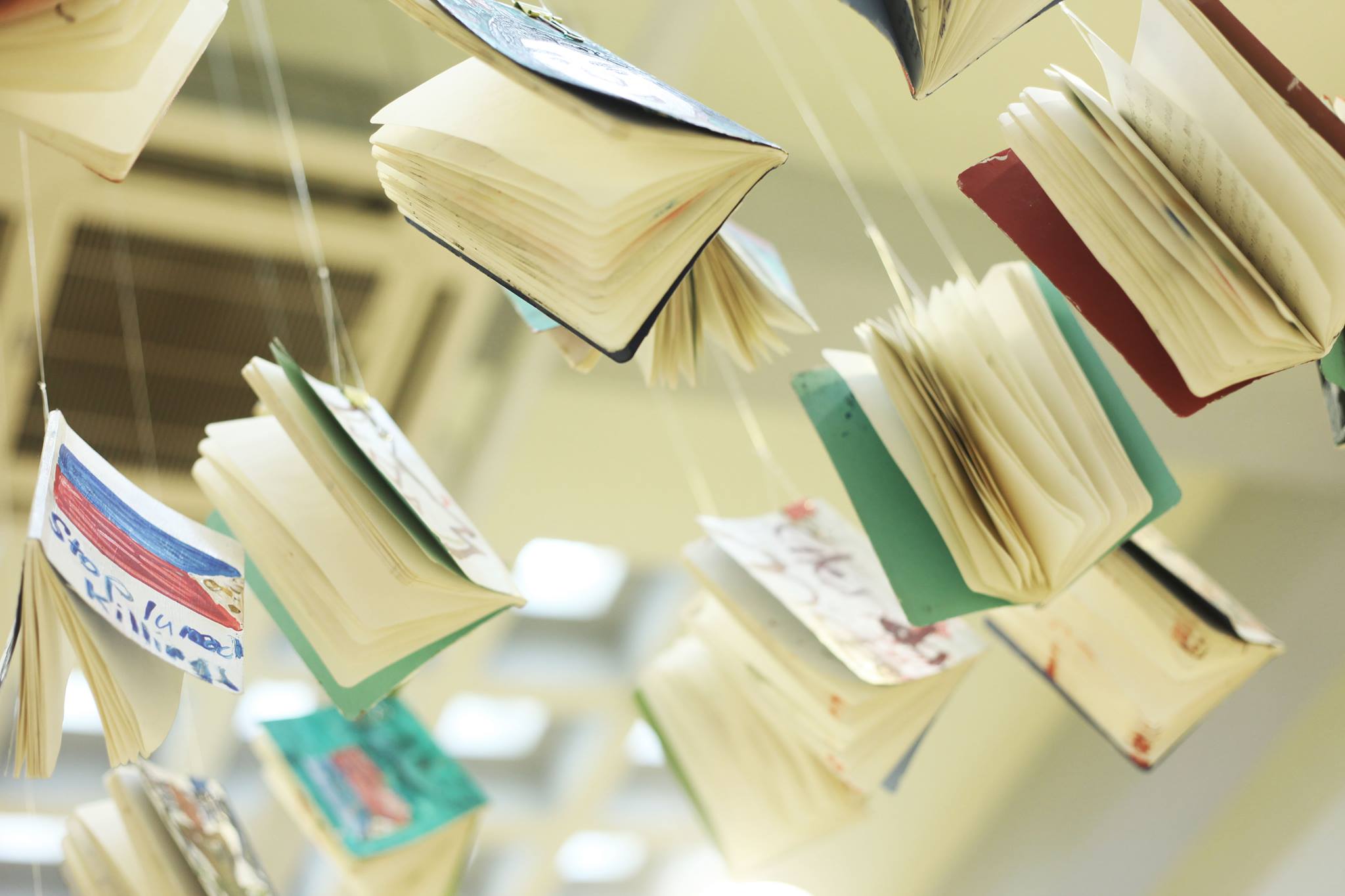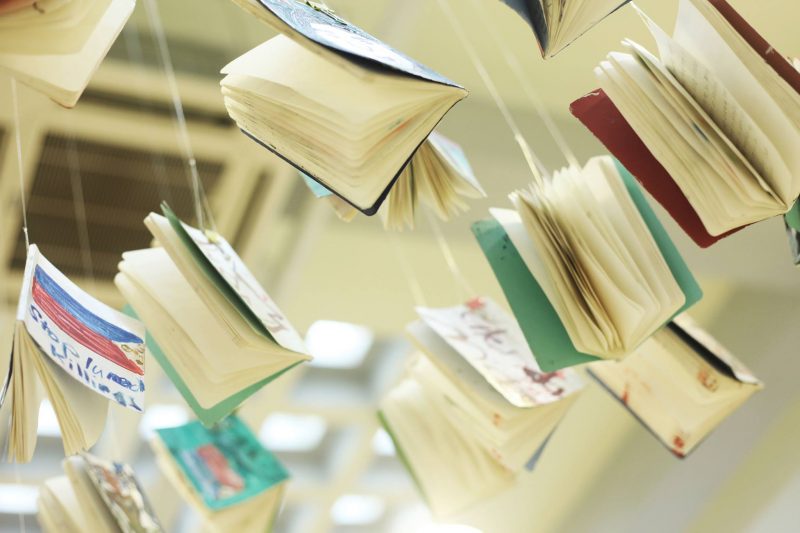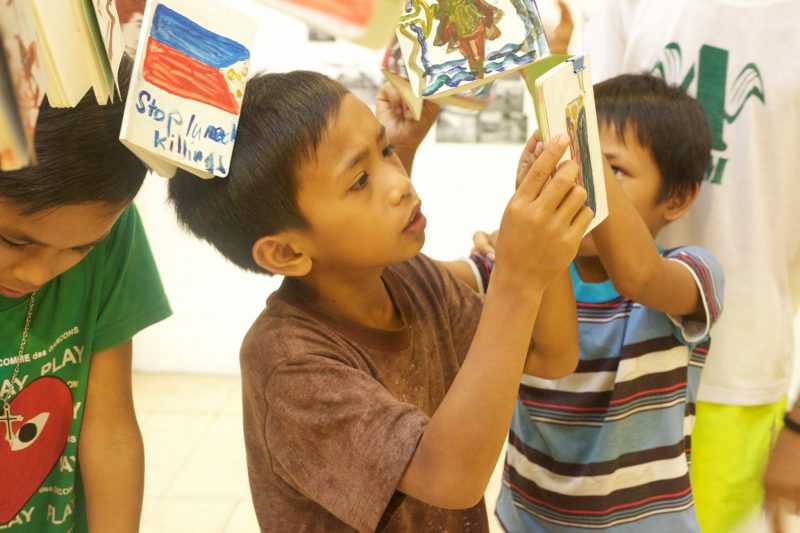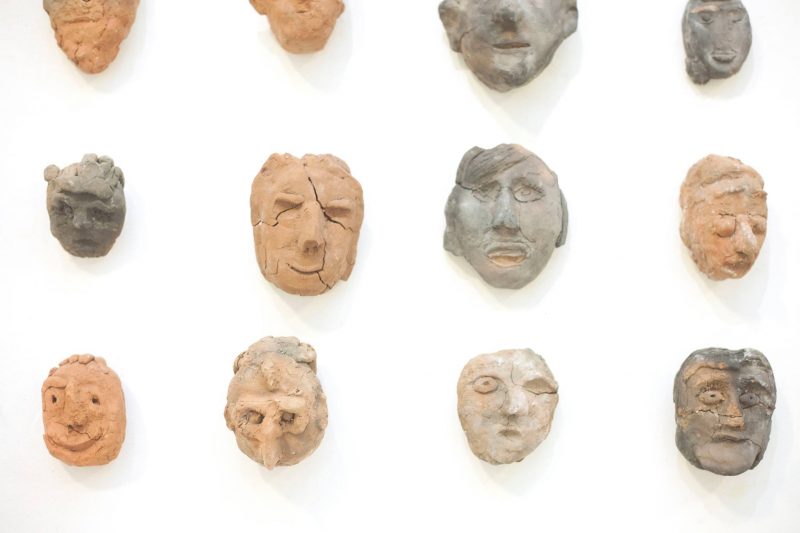18 May 2016
The Face of the Invisible | Art and Displacement

[caption id="attachment_58613" align="aligncenter" width="620"]
 Diaries of Lumad children (c) Lina Zacher[/caption]
Diaries of Lumad children (c) Lina Zacher[/caption]Once upon a time, 5 collaborators, 2 men and 3 women with different passports and multiple cultural identities, accidentally drove into an off-limits Israeli military zone somewhere in Palestine for an EU art-peace project. The vehicle had an Israeli plate, driven by an Israeli researcher, with a strikingly strange mix of passengers composed of an Israeli-German, German, Palestinian-born Swiss national artist-photographers, and a Filipino producer.
In one car, the conversation criss-crossed in English, Hebrew and German, as this team of adventurers realised that their little excursion could be cut short by panicking young soldiers demanding the car to stop behind their locked steel gates – so they can check the identity cards. Albeit tensed, the gang of wanderers drove off after a brief conversation between the driver and the soldiers. For one moment, the group couldn’t help but think, “We could have been shot.”
The incident is one of the few encounters during the preparation for “Challenging Walls” in 2007. This art initiative that wished to look at the daily life of people, who experienced being enclosed and made invisible by physical walls in societies like Cyprus, Northern Ireland, former East-West Germany, and Israel and Palestine, provides a glimpse into the soft reality in the culture of complications. It is one of the many art initiatives that hoped to bring the spotlight to those who have become invisible in the process of division and exclusion.
The story of defining societies while making the “others” invisible is a recurring issue that many are confronted with, without even being aware of it. In such situations, artists sometimes are called to take matters in their hands and actively seek ways to bring consciousness to minds that are asleep. The need to identify a person based on ones cultural roots, background, nationality, religion, gender, colour or orientation appear to have become a leitmotif in various societies, policies and sadly even in the process of making art. The necessity to define, organise and classify origins prominently resonates in the process of cataloging of people. Thus, when the value of statistics prevail, in some cases, the data assortment wins over acknowledging people just as people. The labels then become the determining factor of a specific community’s existence, and without it offers the danger of displacement.
But how much can art and artists really do in contributing to the healing of displaced citizens? What role can art play if it cannot offer a solution? How much risk does one need to take to be able to make a difference?
Amidst the growing attention about refugees in Europe, ASEF culture360 contributor Vanini Belarmino converse with 2 artists living across the 2different continents ofAsia and Europe on their efforts to awaken spirits and offer a face to the invisible through art.
Vanini Belarmino invites Cypriot photographer & filmmaker, Nicolas Iordanou, and Filipina artist & musician Aba Lluch Dalena to talk about their projects and parallel stories on the role they chose to play in art and displacement: “The Alien Trail” and “Batang Lumad.”
[caption id="attachment_58612" align="aligncenter" width="488"]
 ©Nicolas Iordanou[/caption]
©Nicolas Iordanou[/caption]Relationship with the “invisible”
Vanini: As a citizen of Cyprus, what is your objective in bringing the project “The Alien Trail” to life? How do you envision this artistic action to offer “visibility” within your country?
Nicolas: The Alien Trail is a project I initiated within the frame of the European Capital of Culture - PAFOS 2017 in order to bring awareness of the migrant and refugee population in Cyprus. It is a project that aims to examine and present these minority groups to the Cypriot society so as to be seen, understood and to be accepted.
The first and most important step for the Cypriot society is to see the existence of these invisible people; they exist and they are real. They interact with us, they work for us taking up the menial jobs and they take the roles within society that no one else wants. Through their invisibility, they are used only when needed and then they are forgotten. Once this step is overcome, we can move as a society to the phase of acceptance and mergence. What The Alien Trail intents to do, is to make these people visible.
What is it that led you to develop this initiative?
Nicolas: As a refugee myself, that was born and raised in a refugee settlement here in Cyprus after the war with Turkey in 1974, it comes natural to me to care and understand the dire straits that refugees and immigrants are in. I would be very content if this initiative sparks a public dialogue about acceptance and integration instead of xenophobia and racism that we are bombarded with day in and day out.
What is the urgency of this issue?
Nicolas: I believe that the migration that we are witnessing is the most devastating event since WWII. Both these events changed the identity of Europe and the world in general. By not giving it the proper positive attention and try to give it a negative spin, all it does is create more fear which resolves to more violence within our cities, within our neighbourhoods.
[caption id="attachment_58611" align="aligncenter" width="607"]
 ©Nicolas Iordanou[/caption]
©Nicolas Iordanou[/caption]Realisation
Has the project started? How do you operate?
Nicolas: The project started in the beginning of 2016. A team of photographers from Europe will be gathered for a week in Cyprus, to work freely choosing their own photographic mission concerning the migrant population in Cyprus. The first photographer that came was Nikos Economopoulos / Magnum, who visited Cyprus in February and he worked in the Kofinou refugee camp and in certain neighbourhoods in the city of Lefkosia and Limassol. The next photographer is Antoine D’Agata / Magnum, who will be coming in the summer. Bieke Depoorter / Magnum will also be visiting the island in the fall of 2016. I, as the fourth photographer, will try to gain access to the country’s prison facilities and document the immigrants that are held there.
The photographs that will be produced in this project will be presented through a major exhibition here in Pafos and there will be a publication of a photography book.
Furthermore, a video art workshop will be developed in the beginning of 2017, by video artist and filmmaker Sylvia Nicolaides, anthropologist Nadina Christopoulou and art educator Tereza Markidou, which will involve children of these minority groups. The workshop aims to bring together children of diverse backgrounds to participate, experience and create video art with the intention of giving them the opportunity to express them, with a non-verbal visual language, without having the language barrier.
The photographic process and the workshops and the overall experience will be filmed and produced as a documentary, directed by myself and Sylvia Nicolaides, and will be sent to European and International Film Festivals.
Could you tell me a bit more about PAFOS ECoC 2017?
Nicolas: The European Capital of Culture is the most important cultural institution of Europe and one of the most prestigious cultural events in the world. Τhe award of this title is a great tribute for any European city and country. The city of Pafos in Cyprus will be the European Capital of Culture for the year 2017.
The European Capital of Culture is a title designated by the European Union for a period of one year during which a city is given the opportunity to highlight the importance of cultural development, to involve citizens and creators in this process and to promote European cultural identity.
The impact of the Project can be evaluated through the change that is stimulated through cultural and social capacity building, by infrastructure improvements and cultural venue development, but also by the economic impact from the upsurge of visitors to the city. The implementation path of a European Capital of Culture has turned into a model followed by many European cities seeking cultural growth and image change.
[caption id="attachment_58610" align="aligncenter" width="597"]
 ©Nicolas Iordanou[/caption]
©Nicolas Iordanou[/caption]Placement
The third objective notes that the outcomes will be sent for presentation to European and International Festivals, so how would you place this in Cyprus?
Nicolas: The documentary The Alien Trail produced within this project aims to bring awareness on this immigrant and refugee issue and first and foremost will be presented in Cyprus with screenings and discussions, to inform the general public about this important issue that is changing the face of not only Cyprus but Europe in its entirety. The great challenge that we will face is the sustainability of the project and the discussion in general.
When the lights go out and Pafos will no longer be the European Capital of Culture, the issues will remain and it is imperative that the struggle for integration and the need for a better life and a safer environment for all will continue.
Your Role as an Artist
What role would you like to play as an artist in confronting matters/issues on migration & integration for the invisible?
Nicolas: As an artist, I believe that the public is more prone in accepting and discussing issues in a different and more essential way if it is not presented to them in a didactic way (lectures, universities, etc.) or in the public arena through politics and the mainstream media. I believe that people no longer trust politicians and the media but will give a chance to a more humane way of thinking. We want to bring it to a grass root level. I believe that true changes always begin from the bottom going up. Only if an artist can feel and understand the perils of the public can then produce a meaningful project and open a discussion within society. People have been removed from the decision making process and therefore all the decisions that are made for them are totally integrated within a corrupt political system that is influenced by corporations, the media and strict economics, allowing no space for our humanity to be evolved. What we are doing basically with the Alien Trail is starting a conversation with the people. Letting them know that these immigrants that are always in the shadows of society exist and if we really want to benefit the future generations, integration is the only way.
_______________
[caption id="attachment_58614" align="aligncenter" width="620"]
 Lumad Children checking their installed diaries (c) Lina Zacher[/caption]
Lumad Children checking their installed diaries (c) Lina Zacher[/caption]Part II: “Batang Lumad” – Children of the Land, an art initiative by Aba Lluch Dalena (Philippines) and Lina Zacher (Germany). Lumad is a term used to denote a group of indigenous peoples in Southern Philippines.
Relationship with “Batang Lumad”
As an artist and as a Filipino, what is your objective in bringing the project “Batang Lumad” to life? What is it that led you to develop this initiative? What is the urgency of this issue? How do you envision this artistic action to offer “visibility” in the Philippines?
Aba: The "Batang Lumad" art workshops and exhibitions is an independent initiative to support the cause for the thousands of displaced, Lumad evacuees. German artist, Lina Zacher and I followed and documented the Lumads' Manilakbayan rallies last October 2015 and we thought of following them back to Mindanao, right where they are temporarily staying- in Tandag, Surigao del Sur where we conducted art & music workshops.
We recognised the urgency of the issue, needs to be heard, and acted upon by our government because of the growing number of innocent Lumads getting killed, suspected as NPAs (New People’s Army) and the Lumad people asking for justice just because they have been displace in favour of multinational mining companies.
I wish that our exhibition will go around the Philippines and abroad so that there will be awareness on this issue for the general public who needed to know the truth about what's really happening among the Lumad people, their real stories. The Lumad are peaceful guardians of Mother Nature, and are supposed to be protected, not killed by fellow Filipinos overcome by greed.
[caption id="attachment_58616" align="aligncenter" width="620"]
 Young girl marks her hometown on the map (c) Lina Zacher[/caption]
Young girl marks her hometown on the map (c) Lina Zacher[/caption]Realisation
After an intense period of collaboration with Lina and the “batang lumads” - how do you wish to move forward to what you have accomplished so far?How many workshops you’ve conducted in the past months for the lumad children? In what ways, do you wish to secure support for this initiative?
Aba: I am still working on plans to spend more time with the Lumad children, they need so many things in the evacuation camp, even the most basic needs like food are lacking. It is not easy for them to be living in the evacuation camp.
I am wishing that more people would get involved in the cause to bring home the Lumad to their rightful homes. I will continue to encourage people to donate whatever they can give to the Lumad while they are not back in their homes yet and will continue to ask for everyone’s support to ask the higher ups to put an end to the militarisation in the Lumad areas, it is useless and the truth of all this conflict is about greed and corruption in our government. Multinational mining companies, just like our excessive building of super malls, instead of planting trees, must end.
The real Lumad, those who care for our mother nature, environmentalists truly understand this. Are we blind? Look at our mountains and waters, our trees, they have been abused, the Lumad, the farmers, they are displaced and who are benefitting from the mining companies? Not the Filipino people, but the greedy ones.
[caption id="attachment_58615" align="aligncenter" width="620"]
 Self-Portrait by Lumad Children(c)Lina Zacher[/caption]
Self-Portrait by Lumad Children(c)Lina Zacher[/caption]Your Role as an Artist
What role would you like to play as an artist in confronting matters/issues on displacement as well as the realities of the so-called invisible citizens? What impact do you wish to have on the lives of these children and their community?
Aba: I have always wanted to show concern for our world / for our fellowmen, as we all should do. Together with fellow artist Lina (Zacher), we have absorbed the Lumad brothers and sisters’ stories after spending much time with them. Lumad, as guardians of Mother Nature, live and work so closely with the soil, as farmers, they humbly describe their place like a paradise- until they were forced to leave their homes. The displaced Lumads have their own precious culture that must be preserved. We should be very proud of them because they are fellow Filipinos. They must be protected and brought back to their ancestral lands where they rightfully belong.
I believe that an artist must see himself/herself in a humble yet important position to use as a creative channel for change in a world caught in conflict. It is pure joy to realize you were given talents and therefore give back and use it in whatever way to benefit/help make our world a better place to live in.
More information: www.pafos2017.eu
Vanini Belarmino is curator, producer and writer, trained in theatre arts, art history, European cultural policy and management. She is Founder and Managing Director of Belarmino&Partners, an international cultural and arts consultancy, established in Berlin (2008) and Singapore (2011). Vanini is a 2015 Asian Cultural Council Curatorial Fellow.
Similar content
posted on
07 Nov 2009
posted on
24 Mar 2016
posted on
01 Dec 2009
posted on
01 Dec 2015
posted on
09 Nov 2015
posted on
30 Mar 2016





